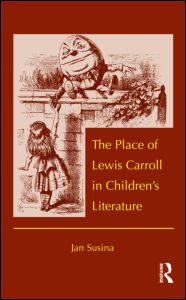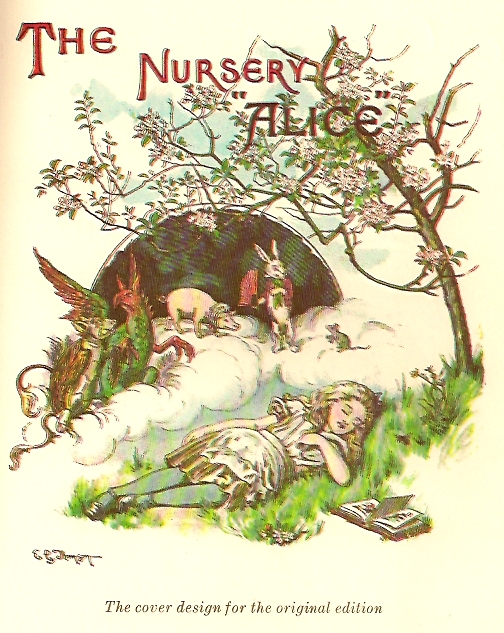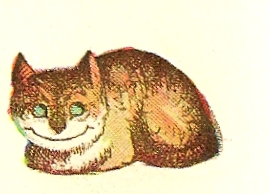The Place of Lewis Carroll in Children's Literature
 The Place of Lewis Carroll in Children's Literature by Jan Susina
The Place of Lewis Carroll in Children's Literature by Jan Susina
In The Place of Lewis Carroll in Children's Literature (Routledge, 2010), Jan Susina examines the importance of Lewis Carroll and his popular Alice books to the field of children's literature. From a study of Carroll's juvenilia to contemporary multimedia adaptations of Wonderland, Susina shows how the Alice books fit into the tradition of literary fairy tales and continue to influence children's writers. In addition to examining Carroll's books for children, these essays also explore his photographs of children, his letters to children and adults, and his lasting contributions to publishing. The book addresses the important, but overlooked, facet of Carroll's career as an astute entrepreneur who carefully developed an extensive Alice industry of books and non-book items based on the success of Wonderland, while rigorously defending his reputation as the originator of his distinctive style of children's stories.
Susina's book was published in a paperback edition in 2011. Hardback, paperback and e-book versions are available on Amazon.
Jan Susina has been interviewed about The Place of Lewis Carroll in Children's Literature in The New York Times, the Pantagraph, and on radio stations WJBC and WGLT.
A review of Jan Susina’s The Place of Lewis Carroll in Children’s Literature by Colin Manlove was published in Gramarye, Issue 2 (2013).
Read Dorothy G. Clark's review in The Lion and the Unicorn 34.2 (April 2010) 253-58. From the review: "The opportunity to learn more—to be startled by facts and surprising pieces of information and perception—is exactly what Susina provides us in this capacious, remarkable book that has broad appeal to nonacademics, scholars, and Carroll specialists."
Claire Imholtz reviewed The Place of Lewis Carroll in Children's Literature in the Winter 2010 (85) issue of The Knight Letter, which is The Newsletter of the Lewis Carroll Society of North America. She concludes that it's a "most informative, enlightening, and highly recommended book, an important addition to the literature of general Carrollian readers and academics."
The Place of Lewis Carroll in Children's Literature was also reviewed positively in Children's Literature 39 (2011):267-71 and Marvels & Tales: The Journal of Fairy-Tale Studies 252 (2011): 390-391.
The State Library of Victoria in 2020 bibliographic list on "Lewis Carroll and his 'Alice' books" notes: "Another item held at the Australian Catholic University Library is The place of Lewis Carroll in children's literature 2010 which looks at Carroll's word play and use of nonsense, Alice as fairy tale, and provides a nuanced consideration of Carroll's influence on world literature and culture to the present day. Especially interesting is the chapter 'Alice in the cyber-world of the 21st century, pp. 141-162."
Chapters
Introduction
1. “Respiciendo prudens”: Lewis Carroll’s Juvenilia
2. Lewis Carroll and the Literary Fairy Tale
3. The Play of Letters in Lewis Carroll’s Alice Books: Ravens and Writing-Desks
4. Multiple Wonderlands: Lewis Carroll and the Creation of the Alice Industry
5. Imitations of Alice: Lewis Carroll and the Anxiety of Influence
6. Too Gaudy or Not Gaudy Enough: Lewis Carroll’s The Nursery “Alice” The Nursery "Alice" original cover
The Nursery "Alice" original cover
7. The Beggar-Maid: Alice Liddell as Street Arab
8. Coffee or Tea: Two Nations of Victorian Children’s Literature
9. “To Strike Out Yet Another New Path”: Cross-Writing and Boundary-Crossing in Lewis Carroll’s Sylvie and Bruno
10. Alice in Consumerland: The Marketing of a Children’s Classic to Contemporary Readers
11. Cyber Alice: Wonderland as Hypertext
12. Show Me, Don’t (Re)Tell Me: Jon Scieszka Revises Wonderland
Afterword
To read an adaptation of Chapter 12 on Jon Scieszka and Mary Blair's interpretation of Alice, as well as to see color images mentioned in the text, please go to this page.
To read an earlier version of Chapter 1 that was published in Children's Literature Association Quarterly 17.4, please click on this link "Respiciendo prudens": Lewis Carroll's Juvenilia (in .pdf format).
A few selections from The Place of Lewis Carroll in Children's Literature:
Perhaps one of the least examined aspects of Carroll's multi-faceted career is that of savvy, entrepreneurial businessman and marketer of his children's books. Carroll should be seen as the author -- as well as the creator and marketing genuis --
The White Rabbit, colorized for The Nursery "Alice"of the Alice industry who capitalized and expanded on his initial success for more than twenty-five years.
-- Jan Susina, The Place of Lewis Carroll in Children's Literature, Chapter 4
The Nursery "Alice" should be seen as one of the many examples of the Alice industry that Carroll developed in order to expand on the literary and economic success of Alice's Adventures in Wonderland. With its many innovations, this edition anticipates the later adaptations of his text by modern publishers, as well as how marketers extend a brand to children, and adults, beyond an original text.
-- Jan Susina, The Place of Lewis Carroll in Children's Literature, Chapter 6
Despite the many groovy posters that feature Tenniel's image of the Caterpillar smoking the
Alice and the Caterpillar, who's smoking a hookah, by John Tennielhookah or Alice nibbling on a mushroom, the suggestive rock lyrics, and Thomas Fensch's Lewis Carroll: The First Acidhead (1968), there is little evidence in Carroll's well-documented autobiographic materials based on his letters and diaries to suggest that he engaged in any recreational drug taking.
-- Jan Susina, The Place of Lewis Carroll in Children's Literature, Introduction
 The Cheshire Cat, by John Tenniel
The Cheshire Cat, by John Tenniel
While these hypertext versions of Alice's Adventures in Wonderland exhibit advancements in terms of interactive technology, they reveal limitations of creating a new version that is as compelling or well-designed as Carroll's original book.
-- Jan Susina, The Place of Lewis Carroll in Children's Literature, Chapter 11
